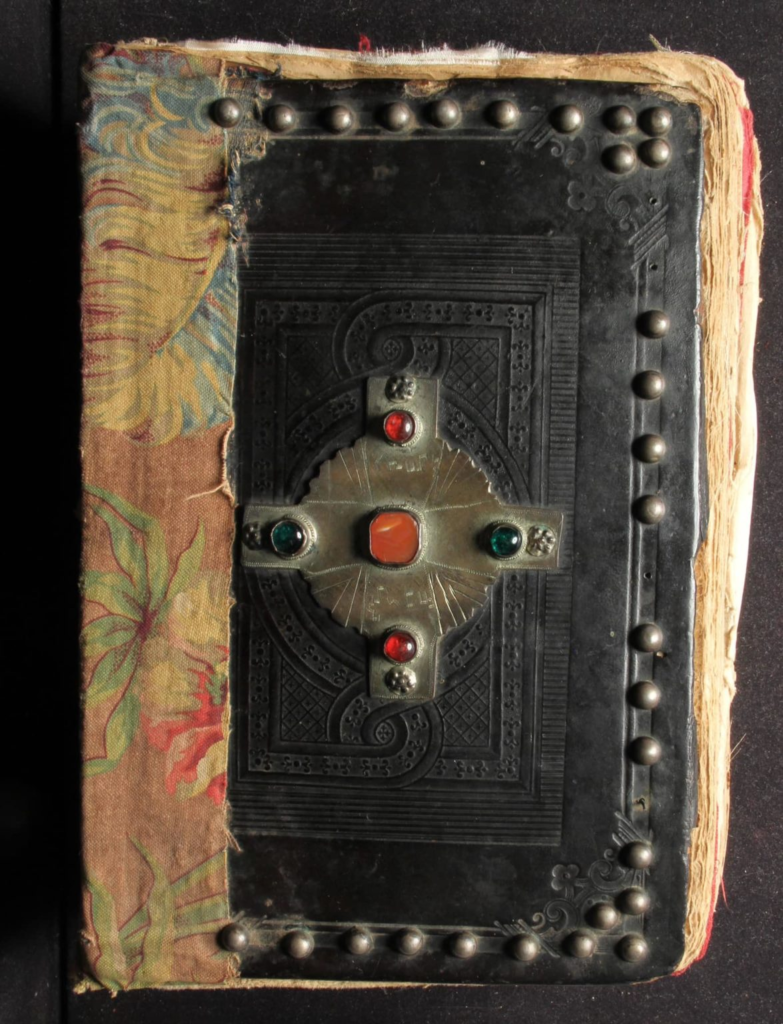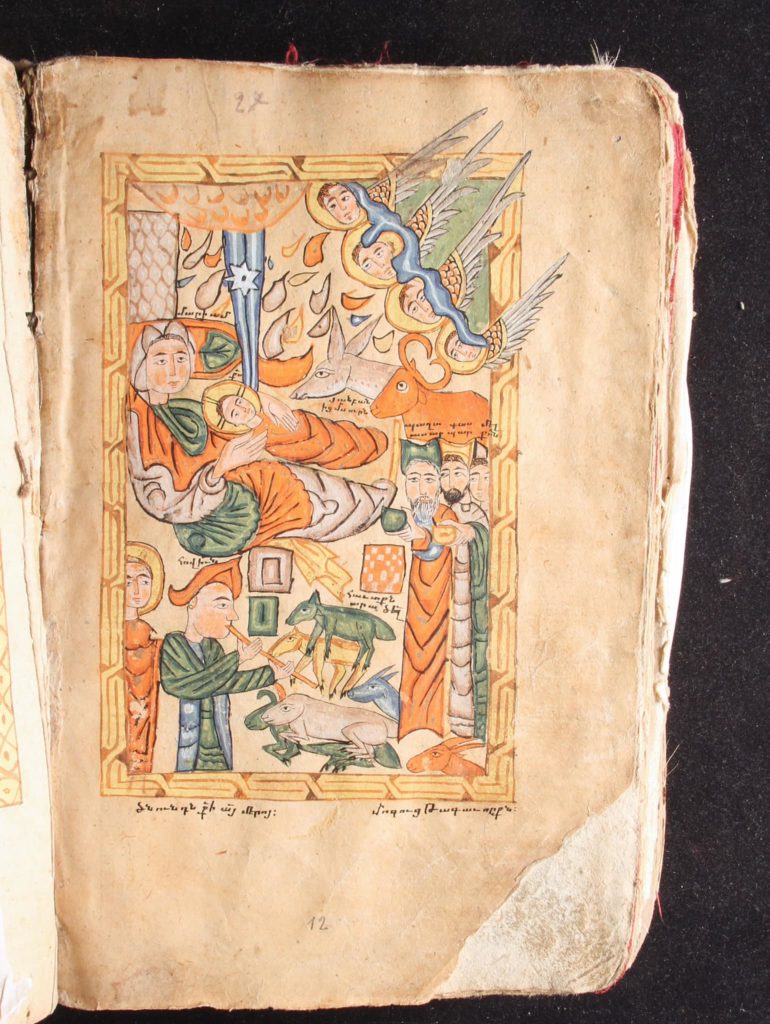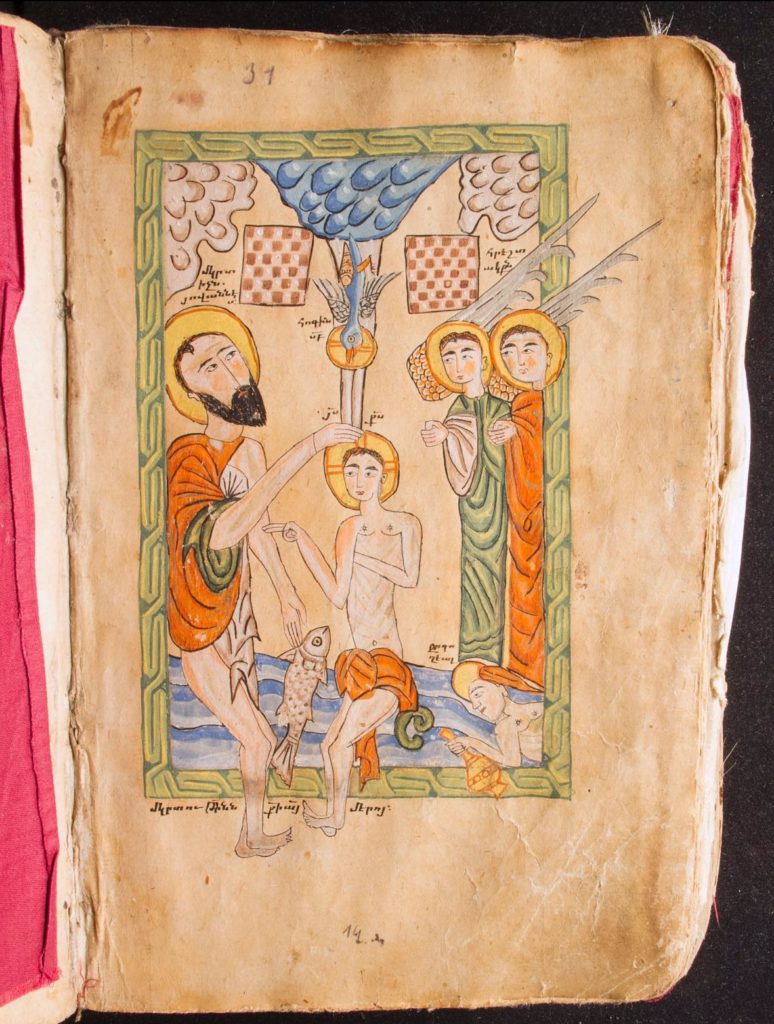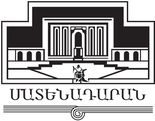
The Gospel of Okhu is a manuscript with a story of mysterious survival. It is kept in Matenadaran and features luxurious miniature decorations. This manuscript represents a significant example of Armenian miniature painting, with rich imagery and more than 30 miniatures per page. It includes canonical evangelical and non-canonical scenes, images of the four evangelists, four name lists, and many coloured and colourless marginalia. Unfortunately, the preserved records do not provide information about the place of creation, the scribe, or the painter. Studies suggest that the Gospel is closely related to the art of the famous miniature painter Hakob Jughayetsi of the 16th and 17th centuries and that some miniatures may belong to his brush. The Gospel of Okhu is renowned not only among Armenians but also among the believing Kurds. The family of Murad owned the manuscript. It was named after the village of Okhu in the Diyarbekir district of Western Armenia. During the Armenian massacre of 1895, the manuscript was in the hands of a Kurd named Mavali but was returned to the owner to avoid heavenly punishment. This relic was once again Mavali’s during the Great Genocide, but he gave it back when he found out that Melkon, the son of the Murad family, had moved to Aleppo. Melkon left the book to his son Manuk Margaryan, who brought the most revered relic to Yerevan in 1983 at an advanced age from the USA and placed it in Mashtots Matenadaran.
The manuscript is damaged, and the lower marginal part is burnt, which increases its historical value.


